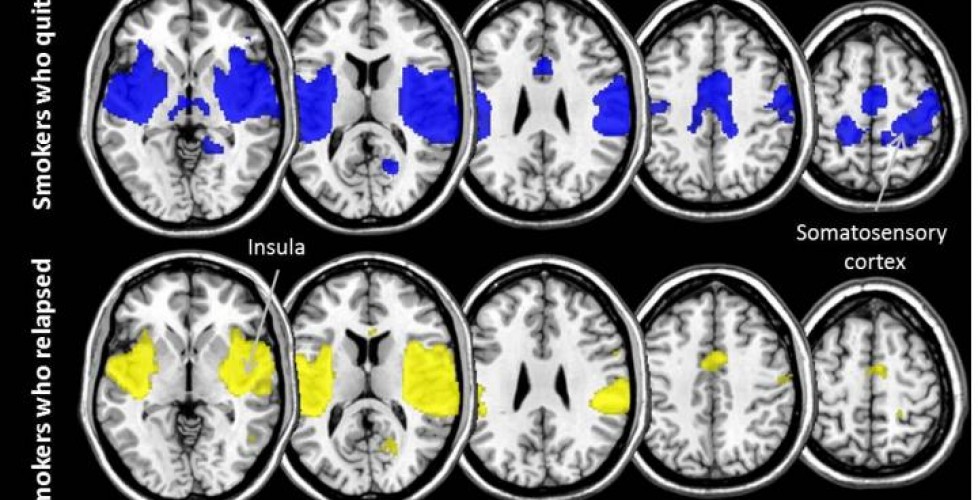Brains of Smokers Who Quit Successfully Might Be Wired for Success
Smokers who are able to quit might actually be hard-wired for success, according to a study from Duke Medicine. The study, published in the journal Neuropsychopharmacology, showed greater connectivity among certain brain regions in people who successfully quit smoking compared to those who tried and failed.
The researchers analyzed MRI scans of 85 people taken one month before they attempted to quit. All participants stopped smoking and the researchers tracked their progress for 10 weeks. Forty-one participants relapsed. Looking back at the brain scans of the 44 smokers who quit successfully, the researchers found before they stopped smoking their brains all showed better communication between the part of the brain that controls urges and cravings (the insula) and a part of the brain involved in sense of touch and motor control (the somatosensory cortex).
“Simply put, the insula is sending messages to other parts of the brain that then make the decision to pick up a cigarette or not,” said Merideth Addicott, Ph.D., assistant professor at Duke and lead author of the study.
The insula, which controls urges and cravings, has long been the subject of smoking cessation research. This new study suggests that targeting the connection between insula and somatosensory cortex could be a good strategy. With the findings in this study, researchers now have more information on where to further investigate, said Joseph McClernon, Ph.D., associate professor at Duke and the study’s senior author.
“We have provided a blueprint,” McClernon said. “If we can increase connectivity in smokers to look more like those who quit successfully, that would be a place to start. We also need more research to understand what it is exactly about greater connectivity between these regions that increases the odds of success.”
Read More
Photo: This graphic shows activity in the brain, illustrated layer by layer. The colored regions represent the average functional connectivity with the posterior portion of the insula, an area of the brain linked to cigarette cravings in smokers. The top row represents the average connectivity among 44 study participants who successfully quit smoking, versus the average functional connectivity for 41 participants who relapsed, shown on the bottom row. A Duke Medicine study shows there is more connectivity between the insula and the somatosensory cortex among the smokers who quit compared to those who relapsed.
Credit: Duke Medicine

